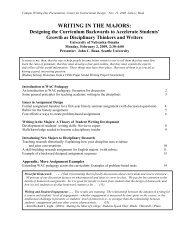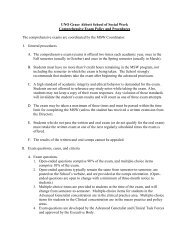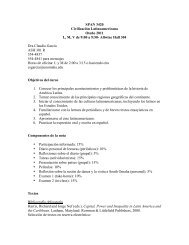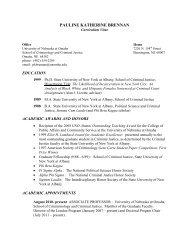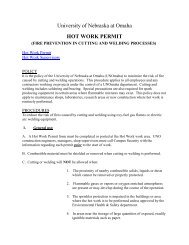Stories of Ambition and Guilt: Five Character Types in Dostoevsky's ...
Stories of Ambition and Guilt: Five Character Types in Dostoevsky's ...
Stories of Ambition and Guilt: Five Character Types in Dostoevsky's ...
You also want an ePaper? Increase the reach of your titles
YUMPU automatically turns print PDFs into web optimized ePapers that Google loves.
10 <br />
achiev<strong>in</strong>g the moral state that Raskolnikov seeks. Throughout Crime <strong>and</strong> Punishment<br />
Svidrigaylov’s primary purpose is to represent this moral state, to display the alarm<strong>in</strong>g<br />
consequences <strong>of</strong> Raskolnikov’s ambition played out. To put it simply, he is a cautionary figure.<br />
Miss Havisham, it may be argued, is also a cautionary figure—but to her adopted<br />
daughter Estella, not to Pip. After be<strong>in</strong>g ab<strong>and</strong>oned on her wedd<strong>in</strong>g day, Miss Havisham resolves<br />
to hate all men, <strong>and</strong> spends most <strong>of</strong> her life try<strong>in</strong>g to <strong>in</strong>still this same hatred <strong>in</strong> Estella. In her<br />
relationship with Pip, however, Miss Havisham is an active, corrupt<strong>in</strong>g force rather than the<br />
passive foil that Svidrigaylov is to Raskolnikov. Near the beg<strong>in</strong>n<strong>in</strong>g <strong>of</strong> the story, she s<strong>in</strong>gles Pip<br />
out, <strong>in</strong>vites him to her house, <strong>and</strong> purposefully leads him to believe that she wants to arrange a<br />
marriage between him <strong>and</strong> Estella, even though she later admits that she never had any such<br />
<strong>in</strong>tention. Unlike Svidrigaylov, a man who lurks <strong>in</strong> the background to demonstrate the results <strong>of</strong><br />
ambition like Raskolnikov’s, Miss Havisham manipulates Pip <strong>in</strong> order to produce the results she<br />
desires <strong>in</strong> him.<br />
Conclusion<br />
With each <strong>of</strong> these five types that Crime <strong>and</strong> Punishment <strong>and</strong> Great Expectations have <strong>in</strong><br />
common, it is the subtle differences between the characters that allowed Dostoevsky to approach<br />
the themes from another perspective. Thus, while Dickens’s novel po<strong>in</strong>ts out the effects <strong>of</strong><br />
twisted ambition by show<strong>in</strong>g Pip’s downfall, Dostoevsky’s emphasizes the potential value <strong>of</strong><br />
guilt by show<strong>in</strong>g Raskolnikov’s confession <strong>and</strong> forgiveness. Both novels address the same<br />
themes with essentially the same cast <strong>of</strong> characters, but because <strong>of</strong> slight variations <strong>in</strong> the use <strong>of</strong><br />
those characters, Dickens <strong>and</strong> Dostoevsky frame their stories <strong>in</strong> quite different ways. The<br />
startl<strong>in</strong>g parallels between the casts <strong>of</strong> these two novels go beyond the five ma<strong>in</strong> character types<br />
that we have discussed here as well. Other possible pair<strong>in</strong>gs are Dunya <strong>and</strong> Biddy (the sister







